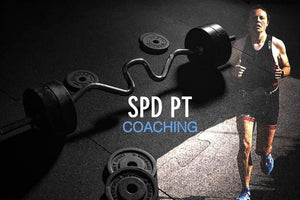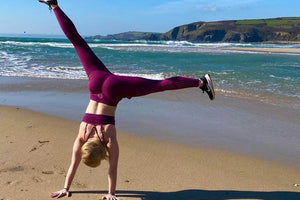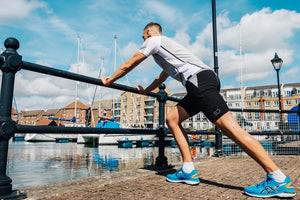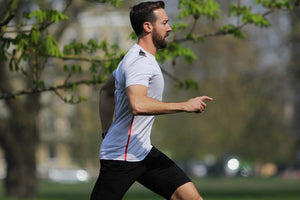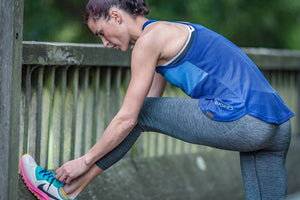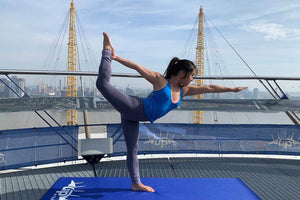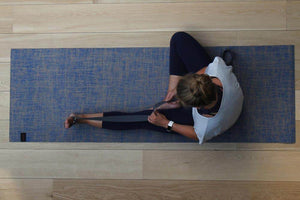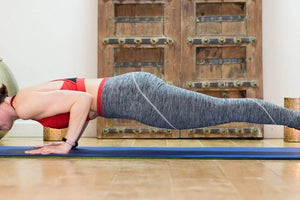The Sundried Guide to keeping active whilst working
The Silent Threat: Unmasking the Dangers of Desk-Bound Living
In today's fast-paced world, the modern office has become a battleground - not against deadlines or competitors, but against a silent enemy: prolonged sitting. The rise of desk jobs has ushered in an era where we spend countless hours glued to our chairs, a seemingly innocuous habit that research has now firmly linked to a shocking array of health problems. This isn't just about feeling a little stiff at the end of the day; we're talking about serious, long-term consequences that can dramatically impact your well-being and longevity.
This comprehensive guide is your ally in this fight. We'll delve deep into the unsettling truth about the risks of sedentary office life, but more importantly, we'll equip you with a powerful arsenal of evidence-based strategies to reclaim your health and inject vitality back into your workday. Get ready to transform your desk from a danger zone into a launchpad for a healthier, more energized you.
The Chilling Reality: How Sitting Silently Sabotages Your Health
Let's face it: sitting feels good. It's comfortable, it's easy, and it's become the default mode for most of us at work. But beneath that veneer of comfort lurks a sinister reality. Prolonged sitting is a wolf in sheep's clothing, silently wreaking havoc on your body from head to toe.
Your Heart Under Siege: The Cardiovascular Catastrophe
Imagine your cardiovascular system as a complex network of highways, delivering vital nutrients throughout your body. When you sit for hours on end, these highways become congested. Your metabolism grinds to a halt, hindering your body's ability to regulate blood sugar and blood pressure. The very vessels that keep you alive and kicking begin to suffer.
The research is unequivocal: prolonged sitting dramatically increases your risk of heart disease and cardiovascular mortality. It's a stark warning that we can't afford to ignore. Some studies even equate the risks of sitting for over eight hours a day with the dangers of obesity and smoking. Let that sink in.
This isn't a new revelation. Back in the 1950s, researchers made a groundbreaking observation: bus drivers, confined to their seats for long shifts, were twice as likely to experience heart attacks compared to their conductor colleagues, who were constantly moving. This early evidence laid the foundation for our current understanding of the perils of sedentary work.
Beyond the long-term threat of heart disease, prolonged sitting also sets the stage for more immediate vascular problems. Blood and fluid can pool in your lower legs and feet, causing discomfort, swelling, and even increasing your risk of deep vein thrombosis (DVT), a potentially life-threatening condition where blood clots form in the deep veins. Varicose veins, those unsightly and sometimes painful swollen veins, are another unwelcome consequence of prolonged periods of inactivity.
The message is clear: when it comes to your heart health, sitting is the new smoking.

Metabolic Meltdown: The Weight Gain and Diabetes Trap
Prolonged sitting isn't just a threat to your heart; it's also a major saboteur of your metabolic health. Think of your metabolism as your body's engine, burning fuel (calories) to keep you going. When you're sedentary, that engine slows to a crawl.
This metabolic slowdown has a domino effect. Your body becomes less efficient at processing fats and sugars, leading to increased fat storage, particularly around your midsection. This isn't just about vanity; excess belly fat is a major risk factor for a host of health problems.
Prolonged sitting is also a key player in the development of metabolic syndrome, a dangerous cluster of conditions that includes high blood pressure, high blood sugar, excess abdominal fat, and unhealthy cholesterol levels. The reduced calorie expenditure and sluggish metabolic processes increase your risk of type 2 diabetes, a chronic condition with far-reaching consequences.
Here's the kicker: even if you hit the gym regularly, you might not be immune. Research suggests that exercise, while essential, may not fully counteract the harmful effects of excessive sitting. This means that simply working out for an hour after sitting for eight hours straight might not be enough. We need to reduce our overall sitting time.
Musculoskeletal Mayhem: The Pain in Your Back (and Neck, and Shoulders...)
Your musculoskeletal system - your muscles, bones, ligaments, and tendons - is designed for movement. When you sit for extended periods, you're essentially putting it in a state of suspended animation.
Prolonged sitting leads to the weakening and wasting of your large leg and gluteal muscles, the very muscles that are crucial for walking, maintaining stability, and preventing falls. Your hip flexor muscles, which connect your legs to your torso, tend to shorten, leading to hip problems and increased strain on your lower back.
Poor posture, the inevitable companion of desk work, is a major culprit in back pain. The constant compression of your spinal discs can lead to premature degeneration, chronic pain, and reduced spinal flexibility.
But the pain doesn't stop at your back. Neck pain, headaches, and migraines are common complaints among office workers, often stemming from prolonged static postures and muscle tension. Shoulder pain, early muscle fatigue, and weakened core muscles are also frequent fliers in the sedentary workplace.
The statistics speak volumes: a significant portion of office workers experience neck, lower back, and shoulder pain. This isn't just a minor inconvenience; it's a serious threat to your comfort, productivity, and overall quality of life.
Mental Minefield: The Link Between Inactivity and Your Mind
The impact of prolonged sitting extends beyond the physical realm; it can also take a toll on your mental health. Studies have established a strong link between sedentary behavior and an increased risk of anxiety and depression. Some research even hints at a potential connection between prolonged sitting and cognitive decline, including dementia.
Lack of movement can disrupt your sleep patterns, further exacerbating mental health issues. Conversely, studies on standing desks have shown that people who stand more at work report less stress and fatigue and experience increased energy and vigor.
Prolonged sitting has also been associated with decreased job satisfaction. When you're physically inactive, your mental well-being suffers, creating a vicious cycle that can negatively impact both your personal and professional life.
The Deadly Connection: Chronic Disease and Early Mortality
Perhaps the most alarming consequence of prolonged sitting is its association with an increased risk of various chronic diseases, including certain types of cancer. Colon, breast, uterine, lung, prostate, ovarian, and endometrial cancers have all been linked to sedentary behavior.
Even more disturbingly, research has shown a strong correlation between the amount of time you spend sitting and your risk of early mortality, regardless of your exercise habits. A sedentary lifestyle is now recognized as a major contributor to premature deaths worldwide.
Prolonged inactivity can also increase your risk of metabolic syndrome and weaken your bones, potentially leading to osteoporosis. The fact that prolonged sitting carries a similar mortality risk to obesity and smoking should serve as a wake-up call.
However, there's a glimmer of hope: studies suggest that engaging in 60 to 75 minutes of moderate aerobic physical activity per day can offset the negative effects of excessive sitting. This reinforces the importance of both reducing sitting time and increasing overall activity levels.
Breaking Free: Your Action Plan for an Active Workday
The good news is that the cycle of sedentary behavior can be broken. It requires a multi-pronged approach, combining changes in workplace policies and environments with individual strategies and behavioral shifts. Let's explore the key weapons in your arsenal:
The Sit-Stand Revolution: Reclaiming Your Desk
Sit-stand desks have emerged as a game-changer in the fight against prolonged sitting. Studies have shown that these desks can significantly reduce sitting time, with some research indicating an average reduction of 100 minutes per workday in the short term.
These desks empower you to easily switch between sitting and standing, promoting better blood flow, reducing fatigue, and boosting energy levels. While the reduction in sitting time may decrease slightly over time, it remains significant, highlighting the long-term potential of this intervention.
However, it's crucial to ensure proper ergonomic setup. Employees need training on how to adjust their desks and maintain good posture in both sitting and standing positions. Standing for prolonged periods without proper support can also lead to discomfort.
Treadmill desks offer an even more active alternative, allowing you to walk slowly while working. When combined with counseling and support, these desks have shown promise in reducing sitting time and increasing physical activity. However, practical considerations like space limitations and potential distractions may make them more suitable as shared resources within the office.
Other active workstation options, such as cycling desks, are also available, but the evidence supporting their effectiveness in reducing sitting time is less conclusive.
The Workplace Transformation: Designing for Movement
Beyond individual workstations, the design of the workplace itself can play a crucial role in encouraging movement. Simple changes can make a big difference:
- Strategic Placement: Position printers, bins, meeting rooms, and break areas farther away from workstations to promote walking.
- Active Meetings: Encourage walking meetings for smaller groups and standing meetings for larger teams.
- Break Policies: Implement policies that encourage frequent, short breaks. Research suggests that taking one to two-minute breaks every half hour is more effective than longer, less frequent breaks.
- Culture of Well-being: Foster an organizational culture that prioritizes employee well-being and actively promotes breaks and movement throughout the day.
- Infrastructure Support: Provide secure bike racks, accessible stairwells, and on-site or nearby exercise facilities to support active behaviors.
The significant initial reduction in sitting time observed with sit-stand desks underscores their potential as a powerful tool. However, sustained effort and ongoing encouragement are essential to maximize their long-term benefits.
Your Personal Movement Manifesto: Simple Strategies for a More Active Day
You don't need fancy equipment or a complete office overhaul to start moving more. There are numerous simple yet effective strategies you can implement right now:
- Set Reminders: Set a timer or use an app to remind yourself to stand up and move around every 30 minutes.
- Move During Calls: Walk or stand during phone calls.
- Take the Stairs: Opt for the stairs instead of the elevator.
- Walk to Colleagues: Walk over to a colleague's desk instead of sending an email.
- Utilize Facilities: Use washrooms or printers on different floors to increase your steps.
- Lunchtime Walks: Take a walk during your lunch break, even if it's just for 10-15 minutes.
- Commute Actively: If possible, walk or cycle to work. If using public transport, stand instead of sitting.
- Be Mindful Outside Work: Be aware of your sitting time outside of work and actively seek opportunities to move.
- Structured Sit-Stand Routine: If you have a sit-stand desk, consider a structured approach like the 20-8-2 regimen (20 minutes sitting, 8 minutes standing, 2 minutes moving).
- Integrate Movement into Tasks: Stand while sending emails, take a brief walk after meetings, or do heel raises while washing your hands.
The consistent recommendation to take short breaks every 30 minutes across various sources highlights its practicality and importance for most office workers.
Deskercise Revolution: Unleash Your Inner Athlete (at Your Desk!)
Who says you can't get a workout while you work? There's a surprising number of exercises and stretches you can do right at your desk to combat the negative effects of prolonged sitting.
Seated Superpowers:
- Hand and finger stretches
- Neck rotations
- Oblique twists
- Hip flexions
- Leg extensions
- Toe raises
- Seated leg raises
- Seated knee-to-chest
- Seated shoulder presses (using light weights like water bottles or books)
- Seated flutter kicks
- Seated hamstring stretches
- Seated lat stretches
- Seated spine twists
- Seated tricep stretches
- Wrist stretches
- Ankle flexes and stretches
- Leg lifts
- Hip stretches
- Glute squeezes
- Seated bicycles
- Seated windshield wipers
Standing Strong:
- Calf raises
- Chair squats (using the chair for balance)
- Desk push-ups (against the desk or a wall)
- Invisible chair exercises
- Various standing stretches
- Wall sits
- Static lunges
- Side lunges
- Single-leg deadlifts
- Step-ups (using a stable surface)
- Bulgarian split squats
- Jumping jacks (if space permits)
- Marching in place
- Isometric muscle strengthening exercises (butt clenches, desk pushes, hand presses, thigh presses)
Stretch Your Way to Relief:
Office stretches are essential for improving flexibility, reducing muscle tension, and preventing those aches and pains that come with prolonged sitting.
- Neck stretches (tilts and rolls)
- Shoulder rolls
- Chest openers
- Calf stretches (while standing)
- Spinal twists (while seated)
- One-arm hugs
- Office chair back stretches
- Reaching for the sky (a back stretch)
- Hamstring chair stretches
- Seated lat stretches
- Seated tricep stretches
- Wrist stretches
- Shoulder shrugs
- Head glides
- Neck relaxers
- Back and side stretches (overhead reaches)
- Middle and upper back stretches (arm pulls)
- Cat-cow stretches (modified for seated positions)
- Thoracic extensions over a chair
- Forearm stretches
- Quadriceps stretches (while standing)
- Hamstring stretches (while standing in a modified lunge)
- 360 breathing with arm movements
- Side bends (ear to shoulder)
- Elbows back chest openers
- Cervical flexion and extension exercises
- Hip flexor stretches (while standing)
- Overhead side reaches
- Arm circles
The sheer variety of desk exercises and stretches available demonstrates that incorporating movement into your workday is achievable for almost anyone. The key is to find a few simple movements that you enjoy and can consistently perform throughout the day.
The Power of the Pause: Mastering the Art of the Break
Breaks aren't a luxury; they're a necessity. Regular breaks from sitting are crucial for both your physical and mental well-being, and they can actually boost your productivity.
The Break Benefits:
- Reduced stress and burnout
- Improved performance, motivation, and concentration
- Increased overall well-being and job satisfaction
- Prevention of ergonomics-related health problems
- Improved circulation and posture
- Reduced risk of metabolic syndrome, unhealthy weight gain, varicose veins, and chronic diseases
- Enhanced cognitive, affective, and motivational brain activity
- Reduced risk of digital eye strain, repetitive strain injuries, and back pain
Even short breaks, such as a 5-minute break every hour, have been shown to increase productivity.
Break Best Practices:
- Frequency: Aim for a break every 30 minutes.
- Duration: Shorter breaks of 3 to 5 minutes are ideal for frequent intervals. Longer breaks of 10 to 15 minutes mid-morning and mid-afternoon can also be beneficial.
- Activity: Active breaks are more effective than passive ones.
Active Break Ideas:
- Stand up and stretch
- Walk around the office or outdoors
- Engage in light exercise
- Do something enjoyable and unrelated to work
- Refill your water bottle
- Visit a colleague
- Stand during phone calls
- Rotate tasks
- Practice mindfulness or yoga
- Use the 20-20-20 rule for eye strain (every 20 minutes, look at something 20 feet away for 20 seconds)
Finding the right break schedule may require some experimentation. The key is to understand the benefits and actively incorporate regular breaks into your workday.
The Ergonomic Edge: Designing Your Desk for Success
An ergonomic office setup is essential for creating an active workspace and minimizing the risks associated with prolonged sitting. Ergonomics is all about designing your workstation to fit you, reducing discomfort and strain, and promoting overall well-being.
Ergonomic Advantages:
- Improved posture
- Reduced risk of musculoskeletal disorders (MSDs)
- Enhanced comfort
- Increased productivity
- Better circulation
- Improved eye and neck health
Ergonomic Essentials:
- Adjustable Chair: Invest in a chair with proper lumbar support.
- Monitor Position: Position your monitor at eye level.
- Keyboard and Mouse: Place your keyboard and mouse at elbow height.
- Accessories: Use wrist rests and footrests as needed.
- Regular Adjustments: Adjust your workstation throughout the day and take breaks to stretch and move.
Standing Desk Power:
Standing desks are a valuable tool for reducing sitting time, offering a range of benefits:
- Lowered risk of cardiovascular disease
- Enhanced overall well-being
- Increased calorie burn
- Energy boost
- Improved posture
- Reduced back pain
- Potential for increased productivity and job satisfaction
However, it's important to consider potential drawbacks, such as cost and the possibility of discomfort from prolonged standing. Proper ergonomic setup and a gradual transition to standing are crucial.
Treadmill Desk Triumph:
Treadmill desks take active working to the next level, combining a standing desk with a treadmill.
Treadmill Desk Benefits:
- Significant reduction in sitting time
- Increased physical activity
- Benefits for cardiovascular health
- Calorie burning
- Enhanced mood and productivity
- Improved focus and motivation
- Time-saving (combining exercise and work)
Treadmill Desk Considerations:
- Larger space requirements
- Adjustment period for walking and working
- Potential noise distractions
- Need for appropriate attire
- Challenges with tasks requiring fine motor skills or intense concentration
Treadmill desks may be most practical as shared resources within an office.
A balanced approach that incorporates both standing and treadmill desks, along with a strong emphasis on ergonomic principles, is the most effective way to create an active and healthy workspace.
Active Commuting: Your Journey to a Healthier You
For those working in Southend-on-Sea, England, the commute to and from the office presents a fantastic opportunity to inject some much-needed movement into the day. Instead of passively sitting in a car or on public transport, consider embracing active commuting options.
Essex County Council is actively promoting walking and cycling as sustainable and healthy modes of transport, with ongoing efforts to improve pedestrian and cycling networks. Southend-on-Sea itself offers a variety of options for active commuters:
- Cycling Routes: Existing cycle tracks, such as the one along Ashingdon Road, and sections of the National Cycle Network Route 16 along the scenic seafront between Southend-on-Sea and Shoeburyness, provide safe and enjoyable cycling routes. Online route planners like Cycle Streets and Bikemap can help you map out your cycling journey.
- Walking Routes: The beautiful Southend coastline offers numerous walking routes connecting areas like Shoeburyness, Thorpe Bay, Southend East, Westcliff, Chalkwell, and Leigh-on-Sea. These routes not only provide exercise but also a chance to enjoy the fresh sea air and stunning views.
- Planned Improvements: The planned "Quietway" cycling routes will further enhance the cycling infrastructure in the area, making it even easier and safer to cycle to work.
Even when public transport is necessary, you can still incorporate movement:
- Walk or cycle to bus or train stations.
- Opt to stand on the train or bus whenever possible.
- Take the stairs and walk up escalators at stations.
- Utilize park-and-ride options, such as the Victoria Centre Car Park near Southend Victoria Station, and walk the remaining distance to the office.
- Use resources like Moovit to plan walking distances from bus stops and train stations to your destination.
To help you plan your active commute, several resources are available:
- Essex County Council's travel plan tool.
- Online route planners like Cycle Streets and Bikemap.
- Local cycle stores for advice and services.
- Cycling maps and information on the National Cycle Network.
- Southend's cycle route kiosks.
- Public transport apps like Moovit and Rome2Rio.
With its existing infrastructure, planned improvements, and readily available planning tools, Southend-on-Sea offers a prime location for active commuting.
Beyond the Office: Cultivating an Active Lifestyle Outside Work Hours
Counteracting the effects of a sedentary office job requires a holistic approach that extends beyond the workday. It's about cultivating an active lifestyle that permeates all aspects of your life.
- Meet the Guidelines: Aim to meet the recommended guidelines of at least 150 minutes of moderate-to-vigorous physical activity per week.
- Minimize Sedentary Time: Actively seek opportunities to replace sedentary activities with standing, stretching, or light movement at home.
-
Simple Strategies:
- Set a kitchen timer to stand up every 30 minutes.
- Stand or move while doing housework or cooking.
- Stand during TV commercials.
- Walk to a neighbor's house.
- Pace while on the phone.
- Stand up every time you receive a text message.
- Find enjoyable physical hobbies like sports or gardening.
- Utilize lunch breaks for walks.
- Incorporate movement into mini-breaks throughout the day.
- Alternate between sitting and standing at home.
- Skip the elevator.
- Park farther away from destinations.
- Dedicated Exercise: Make time for dedicated exercise, whether through group classes, gym sessions, or walks with family.
- Short Bursts: Even short bursts of movement, such as one to two minutes every 30 minutes, can make a significant difference.
Staying Motivated:
- Find enjoyable activities.
- Join group exercise classes.
- Find a walking buddy.
- Participate in company-wide step challenges.
- Take active lunch breaks.
- Organize regular group activities.
- Set realistic goals and track progress.
- Utilize fitness trackers.
The consistency of strategies for reducing sedentary behavior both at work and outside of work highlights the importance of adopting a holistic approach to an active lifestyle for long-term health benefits.
Leveraging Technology: Apps and Resources to Encourage Movement
Technology offers a wealth of tools and resources to help you track your sitting time and encourage more movement.
-
Movement Apps: Numerous apps for iOS and Android devices provide reminders, track sedentary behavior, and offer guided exercises. Examples include:
- Stand Up! The Work Break Timer
- Stand Up Alert-Sitting Alarmy
- Work Break - Break Reminder
- Break Time
- Move - Daily Activity to Stay Healthy
- StandApp
- Randomly RemindMe
- Stretching Exercises - Flexibility Training
- Awareness
- Healthier: Break Reminder
- Time Out
- Big Stretch Reminder
- EyeLeo
- Workrave
- PC Work Break
- Moova: Stand Up & Move More
- Workplace Wellness Programs: Many companies offer on-site gyms, fitness classes, and incentives for physical activity.
- External Resources: Organizations like the American Heart Association and the Centers for Disease Control and Prevention (CDC) provide resources and guidelines for promoting physical activity in the workplace.
-
CDC Resources:
- Workplace Health Resource Center
- Worksite Health ScoreCard
- DeskFit
- Wellness Platforms: Workplace wellness platforms like Reward Gateway offer options for wearable technology.
- Fitness Apps: The FitOn app provides guided at-work exercise classes.
- Wellbeing Organizations: The Wellbeing Project offers strategies for creating movement-friendly workplaces.
The wide availability of these technological tools and resources reflects a growing awareness and support for addressing sedentary behavior and promoting more active lifestyles.
Conclusion: Embracing an Active Workday for Long-Term Health and Well-being
Prolonged sitting and a sedentary lifestyle pose significant risks to your physical and mental health. However, these risks can be effectively mitigated by embracing an active workday and cultivating an active lifestyle beyond the office.
By implementing the evidence-based strategies outlined in this guide, you can break the cycle of sedentary behavior and pave the way for long-term improvements in your health, well-being, and overall quality of life. Remember, every step counts, and even small changes can make a big difference. Take control of your health, reclaim your energy, and embrace an active workday today.
Top 10 tips to helping your Sedentary Lifestyle
- Use Sit-Stand Desks: Swap between sitting and standing during your work day to get the blood flowing and stave off that tired feeling.
- Take Regular Short Breaks: Set reminders to get up and move for a minute or two every half hour, rather than having longer, less frequent breaks.
- Do Desk Exercises and Stretches: Have a go at some simple exercises and stretches at your desk to stop your muscles getting stiff and improve your flexibility.
- Design an Active Work Space: Put printers, bins, and meeting rooms a bit further away to encourage people to get up and walk.
- Promote Active Meetings: Encourage walking meetings for small groups and standing meetings for larger teams.
- Use Active Commuting Options: Walk, cycle, or add some movement to your commute, especially in places like Southend-on-Sea with its decent infrastructure.
- Cultivate an Active Lifestyle Outside Work: Aim for at least 150 minutes of moderate to vigorous physical activity a week and cut down on sitting time at home.
- Use Technology: Use apps and fitness trackers to keep an eye on your sitting time, set movement goals, and get reminders to get moving.
- Prioritise Ergonomics: Make sure your workstation is set up properly, with a well-adjusted chair, monitor, keyboard, and mouse.
- Foster a Workplace Culture of Well-being: Encourage and support movement breaks, active meetings, and overall employee health through policies and workplace setup.




